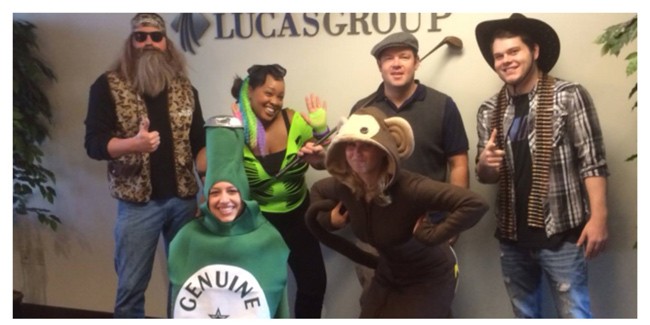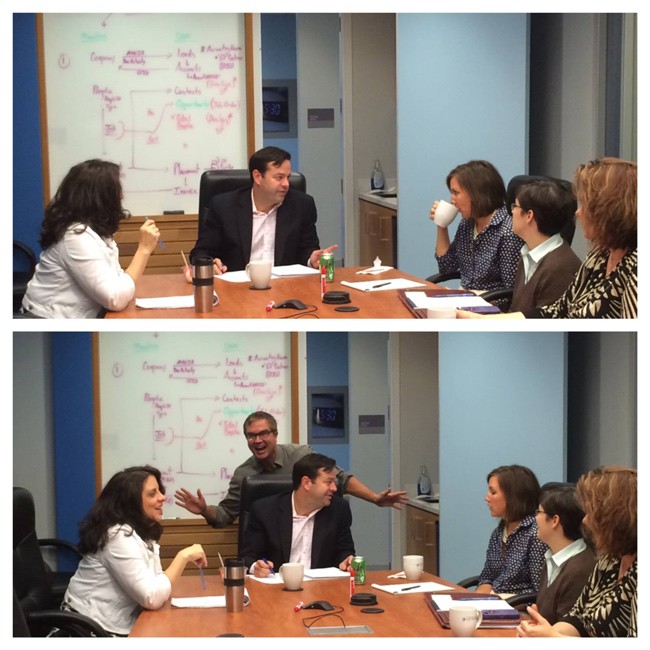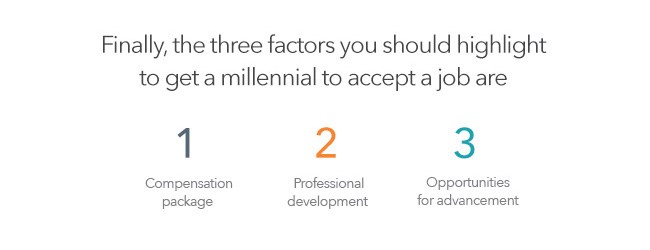Don’t Knock Millennials Until You Try Their Recruiting Ideas
Today, the millennial generation is the white whale for many recruiters. Everyone is after them, but many are having trouble figuring out how to recruit them.
There are hundreds of embarrassing stories about recruiters trying to adopt generational slang—FYI, only older generations use abbreviated text speak like “R U looking for a job?”—and promoting a “hip” young culture, just because employees went out for beers...that one time.
But this doesn’t mean recruiters should stop chasing that white whale; it just means if they want to find millennials, they should eschew stereotypes and look at how millennials would recruit themselves.
Four rules for recruiting millennials the right way
By 2020, millennials will make up 50% of the workforce, so understanding how to recruit them now is more important than ever.
Sara Luther, managing partner in human resources at the Lucas Group, knows this all too well. Being a millennial herself, she has played a key role in helping others attract the best talent of her generation since 2006. Her specialty, and what she frequently writes about across HR resources and blogs, is attracting members of the millennial generation. Luther offers four major tips for recruiting millennials that all companies can adopt.
1. Understand what actually motivates millennials
While trying to use generational slang is a major faux pas, Luther says that not all millennial stereotypes should be ignored.
“The ‘Me, Me, Me’ stereotype is one I do think is accurate; there is absolutely a narcissistic trait in this generation” Luther says. “But, I also think they’re very team-oriented … they want to feel like they’re part of the team and making an impact. They care about what people think of them, and they care about the team.”
That does not mean millennials are entitled, she’s quick to add.
“People think millennials have a sense of entitlement, where if they show up to work they should get paid X amount, and it’s all about money—they want to make six figures by the time they’re 25 years old. But that doesn’t motivate them.”
What motivates millennials then? A LinkedIn survey found that a compensation package is the No. 1 thing recruiters should highlight for millennials to accept a job—but that means benefits, perks, and other advantages, not just salary.
No. 2 and No. 3 are professional development and opportunities for advancement. Ensure that your recruiting strategy enforces any training, mentorship, or advancement opportunities available in your company to satisfy these needs.
2. Use social media to tell your company’s life story
Just like many millennials, your company should be using social media to tell your “life” story. Let millennials decide if your company is one they see themselves in, not the other way around.
LinkedIn's 2015 Talent Trends Report shows that 62% of millennials visit a company’s social media sites to find out information about jobs. It’s your to give them what they’re looking for.
And more often than not, in addition to simply a list of open positions, what they’re looking for is culture on your social presence. Culture is key, Luther says. “In every single picture on our website [for Lucas Group], there are employees. They’re not stock photos; they’re us,” Luther says. “It makes it much more transparent and real, and it’s the same thing on Facebook and Twitter.”

Your LinkedIn and Facebook pages, Twitter account, and even Instagram, Pinterest, or other alternative social media accounts should be full of pictures of your people participating in festivities that are unique to your company, photos of meetings in your conference rooms, and just pictures of employees going about their everyday in their offices.

Most importantly: Never ever try to be someone you’re not. Attracting millennials under false pretenses will only start the relationship off on a bad foot and could cause them to leave. A savvy millennial will make it their mission to work for a company they’re attracted to.
Luther adds one big caveat: Don’t make a mistake, you don’t want to be the place to party. So while of course social media should show pictures of employees having fun, keep the beer-laded pictures to a minimum. It’s just a stereotype that happy hours = happy millennials. Not only is it misleading to job seekers to see all of these photos (unless your employees are literally drinking all day) it doesn’t actually speak to millennials who are looking to make an impact. Be honest, and be more creative than that.
3. Use Instagram…but not how you think
It’s hard to find new grads and 20-somethings who aren’t on Instagram. And while, yes, you should be using Instagram or Facebook to share company photos, there are far more creative ways to put your company culture out there and help recruitment efforts.
Luther takes this approach to an employee’s first day. On day one, Luther says, a new hire attends a big brunch in the office with everyone from their team as a getting-to-know-you day. Here, the new hire is also encouraged to share photos and a hashtag on social media. And, according to Luther, there is a strong impact:
“The new hires see their photos on our social networks within a few hours of starting and feel welcomed,” Luther says. “We often have our new hires share or ‘like’ these images, showing that they do value the shout out, and when they share, their own network sees these and congratulates them on the new job, so it definitely generates a good buzz about the company.”

4. Put your “home” on display
What do millennials want to know when they come in for an interview? That’s simple: Everything. The 2015 Talent Trends Report found that 61% of millennials report a positive interview experience when they get all of their questions answered. And to do that, you have to show them everything they need to see.
They don’t want to sit in the same conference room in one corner of the office as people cycle in and out—and most companies know that. So why then, Luther finds herself constantly asking, is this how the majority of interviews are conducted?
“They don’t care about this one room, they want to see the space, they want to see the people,” Luther says. And if you don’t show them, what are you hiding?
Walk them around the office so that they can hear phone conversations, see what people’s offices look like, see if people have pictures of their family up, and have them shake the hands of some key people.
Be strategic about who millennial recruits see, she says. You want them to see different ages and see different backgrounds. Prepare ahead of time for each job seeker and plan a route through the office where they can see people they might have the most interest in—people their age, people from their background, and people who might have similar interests, even if they’re not on the specific team they’re interviewing for.
But not only is this about seeing the office space—after all, that could be done via pictures on a Facebook page. Bottom line is potential hires are searching for a connection.
“[Millennials] want to connect to the interviewer on some level,” Luther says. “If they have a picture of the Red Sox at their desk, they can connect with them on a sports level. Or if they have a picture of twin boys, they can connect on a family level.”
In the end, recruiting millennials isn’t meaningless jargon or free beers, it’s a connection.
To receive blog posts like this one straight in your inbox, subscribe to the blog newsletter.
*Images from the Lucas Group Facebook page.
Topics: Hiring millennials
Related articles





